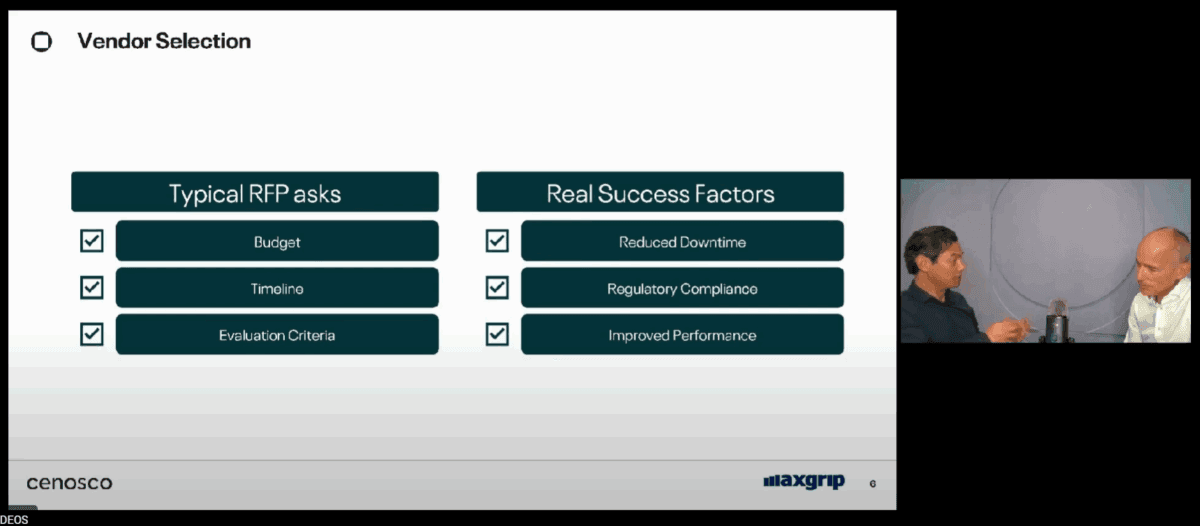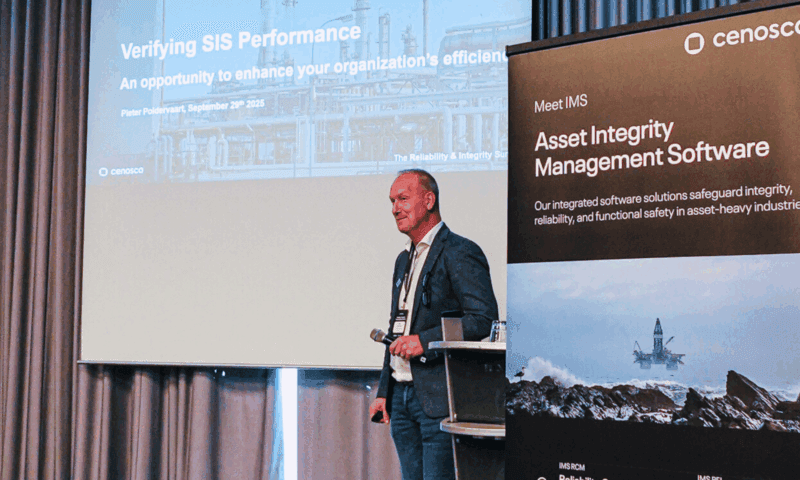We often say that even the most advanced software is only as powerful as those who use it. Adoption isn’t just a milestone at the end of an implementation; it is the beating heart of a successful project and, increasingly, the true measure of ROI. Companies may invest heavily in technology, but the return remains locked away without engaged users, structured processes, and a clear vision. Adoption is where compliance transforms into performance, dashboards turn into decisions, and investments start to pay off.
That belief was at the centre of our recent webinar on user adoption in asset integrity software. Our Account Director, Marnix du Clou, was joined by Ronald de Kok from MaxGrip to share practical experience, real challenges, and the lessons that can make or break adoption.
From Compliance to Performance
A key theme of the discussion was moving beyond the idea that software is simply about “ticking the compliance box.” Compliance is, of course, essential – it protects people, the environment, and the business. However, many organisations find themselves stuck at this stage: investing in systems that satisfy auditors yet fail to generate real momentum within the company. Teams complain about clunky processes, leaders struggle to see a return on investment, and frontline users often feel the software adds work instead of removing it.
The real value emerges when software is used to improve performance. This means not just tracking inspections or logging compliance data, but actively driving better reliability, smarter maintenance, fewer unplanned shutdowns, and improved efficiency across operations. The best business cases, therefore, are not built solely around regulatory requirements but around tangible contributions to KPIs, like reduced downtime, extended asset life, lower operating costs, and safer, more predictable performance.
Both speakers stressed that adoption is the bridge between compliance and performance. A solid compliance framework may be the foundation, but the transformation happens in adoption. When teams recognize that the system saves them time rather than consuming it, that management sees insights instead of static reports, and that the business can measure improvements instead of just demonstrating adherence, adoption takes root. Software becomes more than a compliance tool; it becomes an enabler of progress and a driver of measurable business impact.
Early Signals of Success
When organizations begin exploring new solutions, the earliest conversations often reveal “success indicators” that predict how well adoption will unfold. These signals are less about technology and more about people, commitment, and readiness. Which departments are engaged at the outset? Are decision-makers and frontline users both represented at the table? Is there visible sponsorship from management, or is it treated as just another IT project? And perhaps most importantly, is the IT function involved at the right level, not only to integrate systems, but to align with business goals and ensure long-term sustainability? When these elements are in place early, the likelihood of adoption skyrockets.
Another critical factor is data maturity. Asset integrity is fundamentally data-driven; no software can perform well if fed with inconsistent or incomplete information. Yet this is where many companies struggle. Data is often scattered across legacy systems, buried in spreadsheets, or stored in the heads of long-serving employees. While no organization starts with perfect data, companies that have made an effort to structure and clean their information are far better positioned to see quick wins with a new solution.
Still, even organizations with messy or fragmented datasets can succeed if they take the right approach. The key is to start small and prioritize. By focusing first on the most critical assets, such as those with the highest impact on safety, compliance, or production, teams can demonstrate value early, win management support, and build user confidence. From there, the system can be expanded step by step, gradually improving data quality and broadening adoption across the business.
In short, the signals of success are rarely found in technical specifications or vendor checklists. They emerge from leadership commitment, cross-departmental engagement, and a pragmatic, phased approach to data. Companies that recognize and nurture these factors from the start are the ones most likely to see a smooth implementation, sustainable adoption, and real business impact.
Proof of Concept: More Than a Checklist
Too often, proof of concept exercises become long checklists of technical requirements. Both Marnix and Ronald argued that this approach risks missing the point. Instead, a proof of concept should explore business value: what can the solution enable, how can it inspire, and where are the performance gains?
Engaging IT specialists and business process owners ensures that the proof of concept demonstrates real improvements, not just compliance with a specification. This mindset transforms the exercise from a “tick-box validation” into a glimpse of future possibilities. It also reframes the conversation around ROI, not regarding software features, but how adoption will generate measurable outcomes like efficiency, uptime, and cost savings.
In other words, the proof of concept is not just about proving that the software works; it is about demonstrating that adoption of the software will pay dividends long after go-live.
Implementation and Integration: A People Challenge
Once implementation begins, the focus should expand beyond software configuration to include organizational processes, roles, and responsibilities. The real success of integration lies in connecting people, not just systems.
The speakers stressed that effective integration is about workflows, ensuring inspection findings connect smoothly to maintenance tasks, avoiding duplication of effort, and ensuring that every department understands its role. Data governance, alignment across systems, and clarity over ownership all play critical roles in ensuring adoption at this stage.
Adoption and Change Management
Perhaps the most crucial stage is adoption itself. This is where change management becomes essential. As Ronald noted, “winning the game” requires good software and players who understand their roles, trust the process, and feel motivated to use the tools.
Successful organizations invest in change stories, ongoing training, and continuous dialogue. Adoption does not end with the “go-live” moment. It must be nurtured with feedback loops, visible quick wins, and recognition from senior leadership. At Cenosco, dedicated client teams maintain active relationships long after implementation, ensuring users remain supported, trained, and engaged.
Proving Performance Over Time
Adoption must ultimately translate into performance. Cenosco’s technology enables organizations to track progress, identify trends, and visualize improvements. Dashboards and advanced reporting turn data into insights, empowering teams to demonstrate the impact of their work.
When adoption and performance improvement go hand in hand, organizations can defer unnecessary inspections, extend asset life, and make smarter investment decisions. These are not abstract benefits but measurable contributions to safety, reliability, and cost efficiency. Over time, this creates a continuous improvement cycle where every inspection, every data point, and every decision feeds into a stronger, more resilient operation. And crucially, it gives management the evidence they need to justify investments and prove that the software is delivering a tangible return.
AI in Asset Integrity
Artificial Intelligence is set to transform asset integrity management. From automating repetitive tasks and accelerating data analysis to enabling anomaly detection and predictive maintenance, AI brings opportunities that can reshape how organizations monitor and manage their assets. While it will never replace human judgment, it can dramatically enhance decision-making and free specialists to focus on higher-value work. At Cenosco, we are already embedding these capabilities into our solutions, working closely with clients and academic partners to ensure they are practical, transparent, and effective.
The key takeaway from this discussion is that successful adoption of asset integrity software goes far beyond the technology itself. It requires strong leadership, structured processes, reliable data, and, above all, people who are engaged in the change. When these elements align, asset integrity software becomes more than a compliance tool; it becomes a powerful driver of performance, resilience, and long-term business success.
Готовы к демонстрации?
Вы готовы увидеть IMS Suite в действии? Заполните форму ниже, чтобы заказать демонстрацию!





